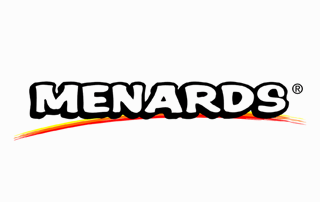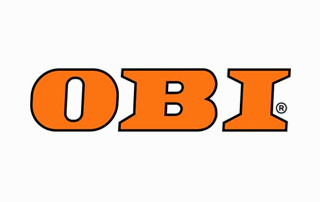
With continuous technological advancements and evolving market demands, the metal manufacturing and stamping industries are embracing new opportunities and facing challenges in 2024. Custom metal manufacturing plays a critical role in modern manufacturing, and its trends and innovations will undoubtedly have far-reaching impacts across the entire industry.
Key Trends in Custom Metal Manufacturing

1. Diversification of Materials
One of the key trends is the diversification of materials. In the past, metal manufacturing mainly relied on traditional metals like steel and copper. However, with technological advancements, new types of metals and alloys are set to emerge, leading to a fresh wave of innovation in custom metal manufacturing. In the future, we will see a broader range of metals, such as high-performance alloys and new composite materials, applied in custom manufacturing.
2. Embracing Digital Transformation
As Industry 4.0 continues to evolve, the metal manufacturing industry is set to fully embrace digital technologies. The integration of artificial intelligence (AI), the Internet of Things (IoT), and other advanced technologies into custom metal fabrication will become increasingly common. We can expect widespread adoption of CNC metal machining, automated robots, and smart manufacturing solutions, improving efficiency, reducing costs, and ensuring product quality.
Digital tools like CAD/CAM software, simulation tools, and digital twin technology are becoming widely used in custom metal manufacturing. These tools help companies anticipate potential problems in the design phase, enabling optimization and reducing costly modifications later.
3. Additive Manufacturing (3D Printing)
Additive manufacturing, also known as 3D printing, will become a core part of custom metal manufacturing. This technology allows metal parts to be built layer by layer from digital models, offering greater precision and customization. Compared to traditional subtractive methods, additive manufacturing will provide more innovative opportunities, allowing the creation of more accurate and personalized products.
Steps for Transitioning to Additive Manufacturing:
- Design: Create a 3D model using CAD software.
- Preprocessing:
- Simulated Modeling: Perform digital tests to assess structural integrity.
- Prepare 3D Printing Files: Convert CAD files into instructions for the additive manufacturing hardware.
- Printing: Based on the selected technology, the process involves adding material layer by layer to create the physical object.
- Post-Processing: Additional processes, such as removing support structures, polishing, and painting, may be required to enhance the product’s appearance and performance.
4. Expanding Applications Across Industries
Custom metal manufacturing will gradually expand its applications into new sectors. Currently, it is primarily used in industries like aerospace and healthcare. However, as technologies advance and costs decrease, custom metal fabrication will increasingly be used in automotive, construction, and consumer goods. This expansion will increase the market scale and influence of custom industrial metal parts.
5. Focus on Sustainability
Sustainability will be an important direction for custom metal manufacturing in the future. As global environmental concerns grow, both businesses and consumers are paying more attention to sustainability. Green manufacturing practices, such as using recyclable materials and reducing energy consumption, will be vital. Metal stamping services will face societal pressure to adopt eco-friendly processes, and custom metal manufacturing companies will increasingly explore renewable energy and energy-saving technologies to mitigate environmental impacts.
Overcoming Challenges in Metal Stamping
1. Material Selection
Choosing the correct material is critical in metal stamping. Different materials have varying physical and chemical properties, and selecting the wrong one can negatively affect the stamping results. Companies must perform rigorous testing and evaluation to ensure the selected materials meet the specifications of OEM metal parts.
2. Mold Design and Maintenance
Mold design and maintenance are crucial for metal stamping quality. Companies should prioritize scientific mold design, utilizing advanced simulation technologies for optimization. Regular mold maintenance will extend their lifespan, ensuring consistent custom metal stamping parts quality.

3. Equipment Tuning and Maintenance
Equipment performance directly impacts metal stamping quality. Companies should regularly tune and maintain equipment to ensure it operates at peak performance. Smart monitoring systems can help detect equipment issues early and provide real-time insights into the production process.
4. Workplace Environment
A clean and safe workplace can significantly influence the stamping process. Companies should maintain cleanliness to minimize dust and impurities from affecting the metal forming and fabrication process. Providing a safe work environment is also critical for the well-being of employees.
5. Innovation in Technology
Pursuing technological innovation is key to overcoming metal stamping challenges. Companies should actively introduce new technologies and equipment, continuously optimizing production processes to improve metal stamping services efficiency and quality.
The Rise of On-Demand Manufacturing and Its Impact
On-demand custom manufacturing is a production model that responds to specific customer needs, allowing for market flexibility and rapid delivery. As consumers demand more personalized products, this manufacturing model is gaining traction. On-demand custom manufacturing not only satisfies consumer preferences but also reduces inventory pressure, improves cash flow, and drives enterprise transformation.
How to Choose the Right Metal Manufacturing Partner
In this competitive landscape, selecting the right partner is essential. Here’s how to approach the decision:
1. Evaluate Partner’s Capabilities and Reputation
When choosing a metal manufacturing partner, thoroughly assess their production capacity, technical capabilities, and market reputation. Conduct on-site visits and gather customer feedback to ensure the partner meets your requirements.
2. Define the Partner’s Service Scope
Different partners may excel in different areas, such as product design, material selection, or production processes. Select a partner that offers comprehensive services that match your project needs to ensure smooth collaboration.
3. Manage Contracts and Agreements
Sign clear agreements detailing both parties’ responsibilities and establish project plans and quality standards. Effective contract management ensures transparency and addresses any issues that arise during the collaboration.
Conclusion
Custom metal manufacturing is an essential part of modern industry, and its trends and innovations will have a profound impact. By adopting automation technologies, implementing sustainable practices, and embracing on-demand custom manufacturing, companies can enhance production efficiency, product quality, and meet diverse customer demands. Additionally, through careful management and innovation, businesses can overcome challenges in metal stamping and lay a solid foundation for long-term development.
In the future, custom metal manufacturing will play an increasingly important role in advancing the industry and promoting sustainable growth.







